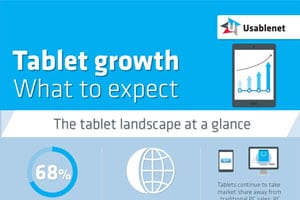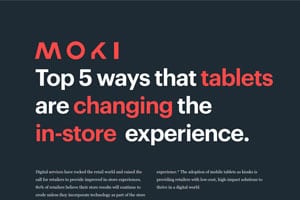
3 Strategies to Convert More Mobile Traffic
Smartphones and tablets are the ultimate business tools, the coolest technologies and the biggest distractions any of us have ever seen.

Smartphones and tablets are the ultimate business tools, the coolest technologies and the biggest distractions any of us have ever seen.

But despite the growing percentage of traffic, ecommerce conversion rates remain much lower on mobile devices and tablets, signaling a greater need to focus on an omnichannel user experience for all visitors, regardless of device.

While many major retailers have rolled out both apps and mobile optimized sites, small and mid-sized merchants, particularly those with limited resources, need to more carefully weigh their options. We’ve outlined the most important differences between mobile websites and native apps.

What do Gymboree, PetSmart and Spanx.com all have in common? They are three of only a handful of top e-retailers fully optimized to display mobile sites on the new Amazon Fire phone. Here’s what you need to do to conform with Amazon’s new phone.
Moosejaw, the outdoor retailer known for its quirky marketing, recently surveyed over 19,000 visitors on their mobile shopping habits. So what did they find out?

It has become imperative for executives at every level to understand the significance of tablets and how they influence the purchasing cycle and overall consumer engagement.

It is retailers belief that store results will continue to erode unless they incorporate technology as part of the store experience. Eighty-percent of retailers reported this belief, according to an infographic by Moki.

The National Retail Federation released a survey reporting that total spending will reach $12.5 billion. Nearly one-quarter of smartphone users will research products and compare gift prices on their smartphone, and 30.6% of tablet owners will do the same.

Wet Seal, Inc., saw its consolidated comparable store sales decline 16.9% in the first quarter, but ecommerce sales for its Wet Seal brand did increase 8.4%.

At the core of the retail evolution, we have millennials and their peculiar, online, mobile shopping habits. They are forcing retailers to pivot—but whether millennials are good, bad or ugly for your business just might come down to how you choose to respond.